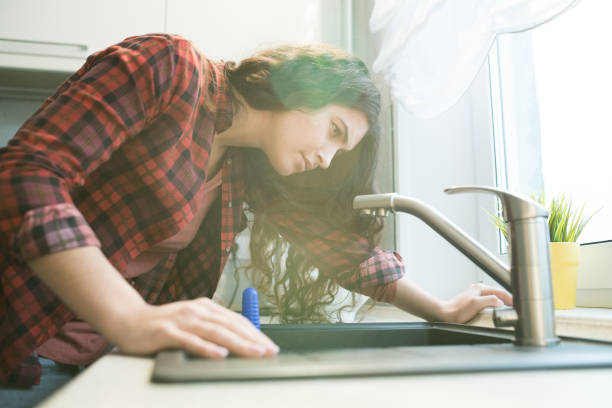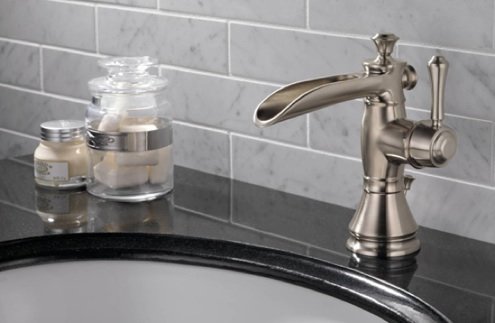This post below in relation to Why Are My Faucets Dripping (And Can I Fix It Myself)? is really enjoyable. Check it out for your own benefit and figure out what you think about it.

Leaking faucets may feel like a small inconvenience, but their impact goes beyond just the inconvenience of the audio. From drainage to sustaining unnecessary financial costs and health and wellness threats, neglecting a dripping tap can result in numerous effects. In this article, we'll look into why it's vital to resolve this typical family problem quickly and properly.
Wastefulness of Water
Environmental Impact
Trickling faucets contribute substantially to water wastage. According to the Epa (EPA), a solitary tap leaking at one drip per second can throw away greater than 3,000 gallons of water per year. This not just strains water sources yet likewise affects communities and wild animals depending on them.
Step-by-Step Guide to Repairing a Dripping Faucet
Tools Needed
Before attempting to repair a trickling tap, collect the necessary devices, consisting of a flexible wrench, screwdrivers, substitute parts (such as washers or cartridges), and plumber's tape.
Usual Faucet Issues and Their Solutions
Recognize the kind of faucet and the specific problem creating the drip. Usual issues consist of worn-out washers, corroded shutoff seats, or damaged O-rings. Refer to maker directions or online tutorials for step-by-step support on repair work.
Financial Prices
Boosted Water Costs
Past the ecological influence, dripping faucets can blow up water bills substantially. The built up wastage over time converts into higher utility expenditures, which can have been avoided with timely fixings.
Potential Residential Property Damage
Furthermore, extended trickling can bring about damage to fixtures and surfaces bordering the tap. Water build-up can cause discoloration, rust, and even structural concerns if left unattended, leading to extra fixing costs.
Wellness Problems
Mold And Mildew and Mildew Growth
The constant existence of dampness from a dripping tap produces a perfect atmosphere for mold and mildew and mildew development. These fungis not just jeopardize indoor air high quality but also present health dangers, particularly for individuals with respiratory system conditions or allergies.
Waterborne Conditions
Stationary water in trickling taps can end up being a breeding place for germs and various other pathogens, boosting the risk of waterborne diseases. Contaminants such as Legionella microorganisms grow in stationary water, potentially leading to major health problems when consumed or breathed in.
Do it yourself vs. Expert Fixing
Benefits and drawbacks of DIY Fixing
While some may attempt to deal with a leaking faucet themselves, do it yourself repair work feature their own collection of difficulties. Without correct expertise and devices, DIY efforts can exacerbate the issue or cause insufficient repair services, lengthening the problem.
Advantages of Employing an Expert Plumber
Hiring an expert plumber makes sure that the underlying cause of the leaking tap is addressed properly. Plumbing professionals possess the expertise and devices to diagnose and repair tap problems successfully, conserving time and decreasing the risk of additional damage.
Environmental Obligation
Specific Payment to Preservation
Taking obligation for dealing with dripping taps aligns with wider efforts towards water conservation and environmental sustainability. Every person's activities collectively make a significant impact on maintaining valuable resources.
Sustainable Living Practices
By focusing on timely repairs and adopting water-saving practices, individuals contribute to sustainable living techniques that profit both existing and future generations.
Safety nets
Regular Upkeep Tips
To stop dripping faucets, perform routine maintenance such as cleaning up aerators, examining for leakages, and changing damaged parts quickly. Additionally, think about installing water-saving tools or upgrading to a lot more reliable fixtures.
Value of Prompt Fixes
Attending to dripping taps as soon as they're seen stops additional water wastefulness and potential damages, ultimately saving both water and money over time.
Effect On Home Worth
Understanding of Well-Maintained Building
Preserving a residential or commercial property in good condition, including resolving maintenance concerns like trickling faucets, improves its regarded value and charm among possible buyers or occupants.
Impact on Resale Worth
Residences with well-maintained plumbing fixtures, including taps, command greater resale values in the property market. Addressing leaking taps can add to a positive perception during home examinations and negotiations.
Final thought
Addressing a leaking tap exceeds plain convenience; it's a necessary action towards conserving water, reducing economic costs, and guarding wellness and home. Whether with DIY repair work or expert help, doing something about it to deal with trickling faucets is a tiny yet impactful way to advertise accountable stewardship of resources and contribute to a much healthier, a lot more sustainable future.
How to Fix a Leaky Faucet: Step-by-Step Repair Guide
A leaky faucet may seem like a simple annoyance, but if it's not fixed promptly, that leak could cost hundreds to potentially thousands. From water damage to mold, mildew, and high water bills, even a tiny leak can be catastrophic if left unattended. Damage like this can even affect the overall value of your home, so it's important to take the right approach for leaky faucet repair. You may need the help of a plumber in some cases, but we've got a few tips you can try on how to fix a leaky faucet before calling the pros.
Four Faucet Types
When you're learning how to fix a leaky faucet, the first step is knowing what kind of faucet you're working with! There are four common types.
Cartridge Faucets
Cartridge faucets come in one- or two-handled varieties. In one-handled cartridge faucets, hot and cold water combines in a single cartridge. In the two-handled versions, hot and cold water are controlled separately and mixed in the faucet.
Ball Faucets
Ball faucets have a single lever you push up and down to adjust the pressure and rotate to change the temperature. A slotted metal ball controls the amount of water allowed into the spout.
Compression Washer Faucets
They're the oldest type of faucet, but they're still used in many homes — especially older ones. Compression faucets have two separate handles that, when turned, raise or lower the washer that seals a water valve. This valve stops water from flowing through the faucet when it is turned off.
Disc Faucets
Disc faucets rarely need to be repaired due to their maintenance-free design. The water flow is controlled by two discs — the upper one raises and lowers against a fixed lower disc, creating a watertight seal. If your disc faucet starts leaking, you may need to replace the seals or clean residue buildup from the inlets.
Fixing a Leaky Faucet
Step 1: Turn Off the Water
Whether you're learning how to fix a leaky bathtub faucet or how to fix a leaky kitchen faucet, always turn off the water supply to your working area when you're fixing a leak. The last thing you want is a flood added to your list of things to fix.
Look for the shutoff valves below your sink or around the tub and turn them clockwise to stop the water flow. If your faucet doesn't have shutoff valves, you may need to turn off the water for the whole house. Check to make sure it's off by turning the faucet on. If nothing comes out, you're ready to start the repair.
Step 2: Take Apart the Faucet
How you disassemble your faucet depends on the type of fixture you have. You can use a flathead screwdriver to remove the caps on top of the handle or handles for cartridge and compression faucets. Inside, you should see handle screws. Unscrew these with a screwdriver to remove the handle.
Disc- and ball-style faucets will typically have an inlet screw near the handle, and removing that will reveal the interior of the faucet.
Detach the Valve Stem
For cartridge- and compression-style faucets, you'll see the inner valve stem or cartridge once you remove the faucet handles. If you have a compression faucet, unscrew the brass valve stem. If you have a cartridge faucet, pull out the cartridge. If your cartridge has been in place for a while, it may require some tools or extra force to remove it due to mineral deposits.
Examine and Replace Parts
Once you've removed the parts, check them out to confirm what needs to be replaced. You may see corroded rubber washers, O-rings, stems, or cartridges. On a ball-style faucet, check the seats and springs for damage.
If you need to repair a leaky disc faucet, check the inlet and seals on the lower disc.
Once you determine what parts must be replaced, visit your local hardware store. Bring the damaged parts with you to ensure you can purchase the correct components to replace them.
Clean Valves and Faucet Cavity
If you've removed a stem or cartridge, you may notice mineral buildup in the faucet's threads. Use white vinegar to clean the valve seat by soaking it for a few minutes, then scrub it away with a soft toothbrush and rinse with warm water. You can also clean the interior of the faucet in the same way.
Reassemble the Faucet
Once your faucet is cleaned and the required parts have been replaced, it's time to reassemble it. Put the pieces back together and slowly turn the water supply back on. Doing this slowly is crucial because too much initial water pressure can damage the new hardware you've just installed.
https://homewarranty.firstam.com/blog/how-to-fix-leaky-faucet

We had been shown that article on What Causes Leaky Faucets & How To Fix Them through a pal on another web property. For those who enjoyed reading our article plz make sure you remember to share it. Thanks so much for your time invested reading it.
Comments on “Our Significance of Dealing with a Malfunctioning Faucet”